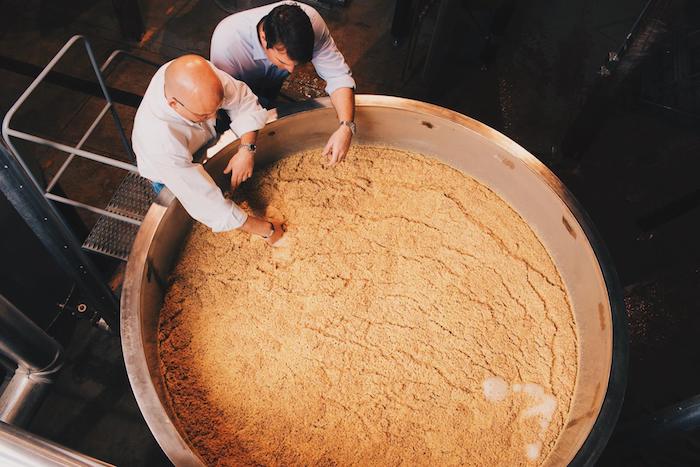I’ve heard it dozens of times: whiskey is just distilled beer. And in one sense, it’s true: both are made from a fermented mash of grain, and if you distill a (hopless) beer, you do end up with whiskey. But anybody who’s ever tasted fermented whiskey mash knows that it’s thin, sour, and usually quite boozy—not the kind of thing you’d be happy to drink by the pint. How come it doesn’t taste as good as beer?
The answer lies in the complexities of the fermentation process. Any homebrewer worth his or her brew pot knows that 90% of brewing is cleaning, cleaning, cleaning. Unless you’re Cantillon, bacteria are the enemy of good beer, and most brewers do everything they can to control the microorganisms that get into their brews. One way they do that is by boiling their wort before they ferment it to kill any lingering wild yeasts or bacteria that might have hitched a ride on their grain or equipment.

Distillers, on the other hand, are much more laissez-faire about protecting their mashes from contamination. In fact, most don’t boil their mashes at all. Add that to the fact that many distilleries, at least in Scotland, use wooden wash backs (virtually impossible to thoroughly clean compared to stainless steel), and you’ve got a recipe for funky, sour beer—and not in that trendy way that people are into these days.
Of course, distillers also pitch commercial yeasts in their mashes. That means their mashes typically have a variety of microorganism cultures living alongside one another, including commercial yeast, lactic acid bacteria (the stuff that makes sourdough bread), acetobacter (the stuff that makes vinegar), enteric bacteria (the same bacteria that help us digest food), and wild yeast (which are often resident in old equipment and facilities).
As fermentation proceeds, the activity level of each of these microorganism populations relative to one another changes. For example, during the first part of fermentation, the commercial yeast might be running the show, busily chowing down on sugars and converting them into ethanol. Over time, however, the commercial yeast slows down (too much alcohol in solution, and they start to die off), which is when lactic acid bacteria often take over. While this might be undesirable for beer, it’s actually what distillers want, as late-stage lactic fermentations are important for whiskey’s flavor development. So whiskey mash, even more than beer, is the product of multiple kinds of yeast and bacteria, all working together.
Fermentation science is complicated—so complicated you can get a degree in it—but if you’re interested in learning more about the tiny creatures that turn porridge into Macallan, I recommend starting with something like Whiskey: Technology, Production, and Marketing by Inge Russell and Graham Stewart (my main source for this article) before you sign up for that Organic Chemistry class.



